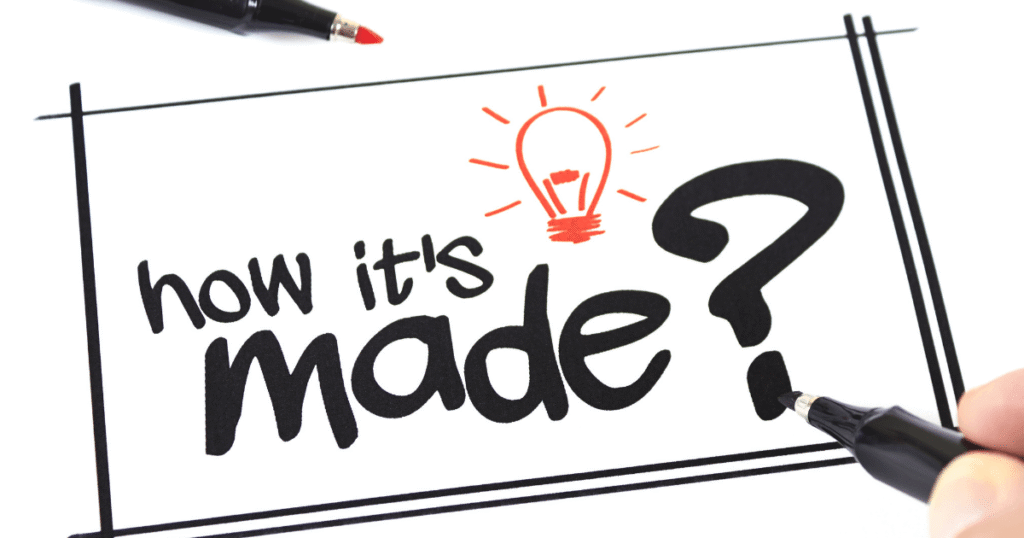Digital product names are no longer just labels—they’re personalities. In 2025, your product’s name needs to punch through the noise, charm algorithms, win over distracted humans, and still sound like it didn’t come from a spreadsheet.
Gone are the days when you could just slap on a word like “Zap” or “Clickr” and call it a day. In a world full of smart fridges, AI-powered productivity apps, and digital wellness tools, your product’s name has to work overtime. It must communicate what you offer, how you make life easier (or cooler), and still sound like something people want to say out loud at a dinner party.
Whether you’re building a mobile app, launching a course, selling NFTs, or creating a digital planner that predicts your future (almost), this post walks you through the top naming trends of 2025—with plenty of examples, laughs, and practical advice to make sure your name doesn’t end up sounding like a forgotten Java update.
Digital Product Naming Trends: What’s Hot in 2025?

In 2025, the digital product naming scene feels like a TikTok algorithm—fast, unpredictable, and surprisingly emotional. The focus is no longer just on uniqueness, but on connection, clarity, and culture relevance. If your product name doesn’t feel authentic or fails to align with modern user expectations, you’re likely getting scrolled past.
One major shift is the “vibe-first” naming approach. Rather than purely describing the function, names now aim to feel right. Think Calm, Headspace, Notion—names that feel like a soft breeze or a deep breath. Short. Emotional. Functional. And very, very shareable.
We’re also seeing the rise of hybrid naming—blending human warmth with machine efficiency. Apps are combining ancient words with techy endings, like “Suno” (listen, in Hindi) or “Aurra” (a rework of “aura”) to create names that feel both poetic and futuristic.
Names are becoming community-aware too. What Gen Z loves (meme-ability, irony, slang) may not fly with B2B folks looking for trust and clarity. So, context is king. Or queen. Or non-binary monarch.
Creative Naming Trends for Digital Products in 2025

In 2025, creativity in digital product naming is like a good coffee—unexpected, bold, and memorable. Whether you’re building a journaling app or a virtual escape room, standing out means ditching the dusty naming templates and embracing expressive, memorable choices.
Here are 10 fun and fresh creative name types we’re seeing everywhere:
- 🎨 Blended Words: Glambit (Glamour + Bit)
- 🧠 Concept-Based: FocusFuel
- 📜 Ancient Meets Modern: Mythika
- ⚡ Energy-Driven Names: Zaploid
- 🧊 Minimal & Crisp: Drift
- 🍭 Cute & Catchy: Poppio
- 📱 SMS-Style: Txtly
- 🎧 Sound-Driven Names: Humlo
- 🧬 Tech + Nature: NeuroBloom
- 🪩 Nostalgic Mashups: PixelPop
These names are not just random fun. They build instant recognition and emotional value. Think of them like the jingle you can’t get out of your head—except it’s a name you love to say out loud.
Creative names humanize the tech and invite curiosity. They’re your brand’s way of saying, “We’re not boring. Promise.”
AI and Tech-Driven Product Name Ideas in 2025

We live in the golden age of letting machines do the thinking. AI is not only helping write code or generate art—it’s now helping you name your product too. And let’s be honest: the robots are getting good at it.
AI-powered name generators are producing polished, domain-ready, often poetic names. But that’s not all. You can also fine-tune names using tools that assess phonetics, memorability, language conflicts, and even market competition. Welcome to the era of smart naming.
Here’s what makes AI naming a trend in 2025:
- 🧠 Data-Informed: Tools that analyze search volume, trademark availability, and naming fatigue.
- 🌍 Multilingual Safety Nets: No more embarrassing mistranslations.
- 🤖 Emotion Prediction: Machine learning models can predict the emotional resonance of names.
- 🔤 Name Length Optimizers: 5–8 characters is still the sweet spot.
- 💻 Visual-Name Match Tools: Tools that match logo + name aesthetic.
That said, don’t outsource your soul. Use AI as a creative partner, not the final voice. The name should feel human, even if it was born in a silicon brain.
Minimalist vs. Descriptive: Product Naming Styles That Work

Simplicity is seductive. In fact, in 2025, minimalistic naming isn’t just a design aesthetic—it’s a strategy. But let’s not bury descriptive names just yet; they’re still useful, especially in B2B or SEO-heavy environments.
Here’s how the two approaches compare:
| Style | Example | Pros | When to Use |
| Minimalist | Blink, Loom | Memorable, flexible, brandable | Consumer apps, lifestyle products |
| Descriptive | Invoice Ninja | Clear, functional, searchable | SaaS, marketplaces, tools with niches |
Minimalist names evoke curiosity, build brand mystique, and often age well. Think “Uber” or “Notion.” But they require marketing firepower to explain what you do.
Descriptive names do the explaining for you—great for trust, SEO, or niche tools. “TimeDoctor” tells you exactly what it does. But it can feel generic.
In 2025, we’re seeing hybrid styles: simple names paired with functional taglines. “Flowly – Guided Breathing” or “Bento – Your Daily Planner.” The best of both worlds.
Choose based on your audience, budget, and long-term vision. And maybe don’t name your app “Appy”—that ship has sailed.
Emotional Naming for Digital Brands: How It’s Gaining Traction

There’s a reason why people love Calm or Headspace or HuggingFace—it’s not just the interface; it’s how the name makes them feel.
In 2025, emotional branding is no longer a marketing add-on. It’s baked into the name. Names that stir feelings of comfort, curiosity, or safety are winning user loyalty faster than ultra-descriptive alternatives.
10 emotionally driven name styles winning in 2025:
- 💖 Safe & Soothing: Nestly
- 🌿 Natural & Grounded: Rootly
- 🎈 Light & Joyful: Bubbla
- 🤗 Human-Like: Wello
- 🔮 Mystical & Curious: Lumenna
- 🌈 Inclusive & Friendly: Allay
- 💫 Hopeful: Bravio
💌 Personalized Touch: DearMe - 🧘 Mindful & Peaceful: Mura
- ☁️ Dreamy & Escapist: Driftory
These names build bonds. They make users feel seen. And in a digital world that can feel cold and transactional, that’s a competitive advantage.
When naming emotionally, test with real people. Their reaction tells you everything. If they smile or sigh, you’re on the right track.
Naming Digital Products for Gen Z and Alpha: What Works Now

If Millennials wanted sleek, Gen Z demands edge. And Gen Alpha? They’re practically born with a filter and an algorithm. Naming for younger generations in 2025 means tapping into their culture—not copying it, but understanding it. Think irony, layered meanings, TikTok aesthetics, and a bit of rebellion.
These generations live online, bounce between 5 apps at once, and can spot try-hard branding from miles away. Names that win them over usually speak in memes, slang, or simplicity. Oh—and nothing that sounds like an HR software tool from 2012.
Here are 10 name types resonating with Gen Z and Alpha audiences:
- 🎮 One-Word Zingers: Zloop
- 🔥 Slightly Ironic: Mehdi
- 📸 Social-Savvy: Snapiq
- ✌️ Low-Effort Vibe: Eh?
- 🌀 Retro-Mashups: GlitchPop
- 🤖 Meta & Aware: BetaBet
- 🧠 Smart-Aesthetic: Thinkr
- 🫧 Cute-Core: Bloopie
- 💬 Slang-Inspired: Betcha
- 📍 Short & Punchy: Rilo
These aren’t just cute names—they reflect a shift. Gen Z and Alpha users want products that feel like friends, not tools. A name that feels like a playlist title is more appealing than one that screams “task manager.”
If you’re targeting this audience, lean into pop culture, playfulness, and inside jokes. Bonus tip: test your name as a TikTok handle—if it sounds like a creator username, you’re gold.
Globalization of Digital Naming: How to Name for Worldwide Appeal

So, your digital product’s ready to go global. Great. But before you celebrate, double-check that your shiny new product name doesn’t mean “potato” in Polish or “lazy” in Arabic (true stories).
In 2025, creating globally friendly digital product names is less about translation and more about cultural intelligence. As the internet erases borders, your brand name needs to land well in London and Lagos.
Key elements to consider when naming for global appeal:
- 🌐 Language Simplicity: One or two syllables work best.
- 💬 Pronounceable Across Cultures: Avoid harsh consonant clusters or tricky letter combos.
- 🧭 Neutral or Positive Connotations: Test names for slang and cultural meanings.
- 🧾 Trademark & Domain Availability: Globally clear IP = fewer lawsuits.
- 📱 Appealing Typography: Will it look good across alphabets and screens?
- 📊 Cross-Platform Adaptability: Works on app stores, URLs, and hashtags.
- 🧠 Memorability: Especially in non-native English-speaking regions.
- 🧭 Avoiding Negative Historical References: Check history, especially in Europe and Asia.
- 🧿 Meaningless but Musical: Invented words like “Zara” or “Oppo” work well.
- 🔤 Emoji-Friendly: Yes, this matters. Can you match your brand with an emoji or two?
Global naming isn’t about being bland—it’s about being broadly lovable. The goal is to stay expressive while avoiding linguistic landmines.
Test your top picks with a small, diverse focus group (or just post them on Reddit and brace yourself). If no one laughs or cries for the wrong reasons—you’re probably safe.
Keyword-Based Digital Product Names: Do They Still Matter in 2025?

SEO isn’t dead—it’s evolved. And in 2025, keyword-based names aren’t just for dusty affiliate blogs or B2B dashboards. They’re making a comeback, but in slicker, smarter forms.
While most modern brands chase emotional or minimal names, some businesses still need that functional clarity—especially in saturated markets. A name like “CryptoTaxTool” might not win a design award, but it’ll show up when someone panics at 11:45 p.m. on April 14.
Types of keyword-based digital product names that still work:
| Name Style | Real or Inspired Examples | Why It Works |
| Function-Based | TimeTracking Pro, ResumeBuilder | Easy to find, instantly clear |
| Location-Specific | IndiaStartup App, BerlinBooks | Local SEO booster |
| Problem-Solving | SleepFixer, AnxietyCoach | Answers specific user pain points |
| Audience-Driven | Tools for Creators, DevSuite | Calls out the user clearly |
| Hybrid Descriptive | TrackMate, NoteHaven | Combines clarity with slight flair |
Search-optimized names tend to do well for low-brand-awareness, utility-first, or early-stage products. They’re ideal for quick clicks, app store discovery, and category domination.
But here’s the twist: too many SEO names can feel spammy. The trick in 2025 is blending searchability with brandability. Add a twist. Use clever phrasing. “SleepFixer” > “Sleep App.”
So yes, keywords still matter—just make sure they don’t sound like keywords.
Personal Opinion: Why Simplicity Will Win the Naming Race in 2025

Let me get real for a moment. We’re drowning in noise. Scroll this, click that, listen here, rate us 5 stars. Every digital product is screaming for attention like it’s auditioning for a reality show.
That’s why I believe the biggest trend of 2025 isn’t flashy, AI-crafted, or ultra-cute—it’s simplicity.
Simple names cut through the chaos. They don’t require explanation, don’t need a brand guide, and don’t make your brain hurt. Just ask the teams behind Calm, Slack, Zoom, or Duolingo. These names are clean, evocative, and easy to say at the end of a long day.
The best names, in my opinion, act like friendly whispers in a world full of push notifications. They say, “Hey. I’m here to help. Not overwhelmed.”
If you’re torn between clever and clear—go with clear. Clever fades. Clear converts.
What These 5 Naming Trends Mean for Your Digital Brand
Let’s face it—your digital product’s name isn’t just a formality. It’s the first impression, the repeatable story, the word someone types into Google after their friend raves about your app over coffee.
In 2025, naming a product isn’t just an art or a science—it’s a strategy.
So what should you take away from all this?
- Go creative, but don’t lose clarity.
- Let AI help, but keep the human heart.
- Think global, but speak simply.
- Use keywords, but don’t sound like a robot.
- And above all, connect emotionally.
Names are the handshake before the hug. Make yours warm, memorable, and true to your brand’s soul.
Want more inspiration? Check out this in-depth naming guide by HubSpot to go even deeper into product naming strategies.
Discover the most important digital product naming trends in 2025. From AI-generated names to emotional branding, explore practical tips and 50+ real examples to elevate your product name game.






















Leave a Reply